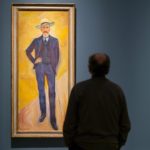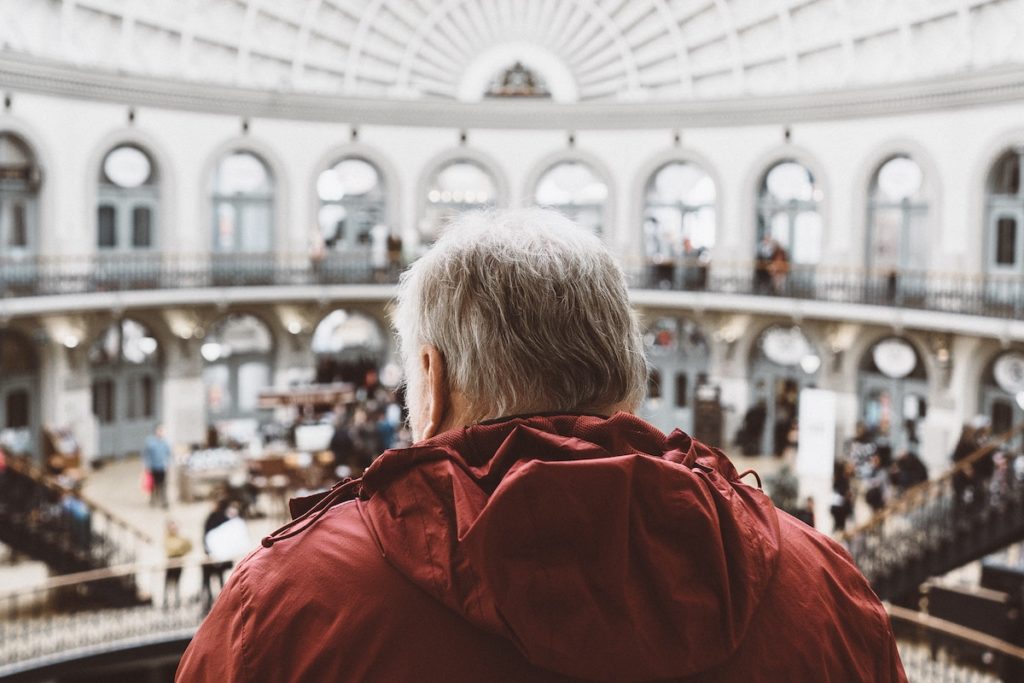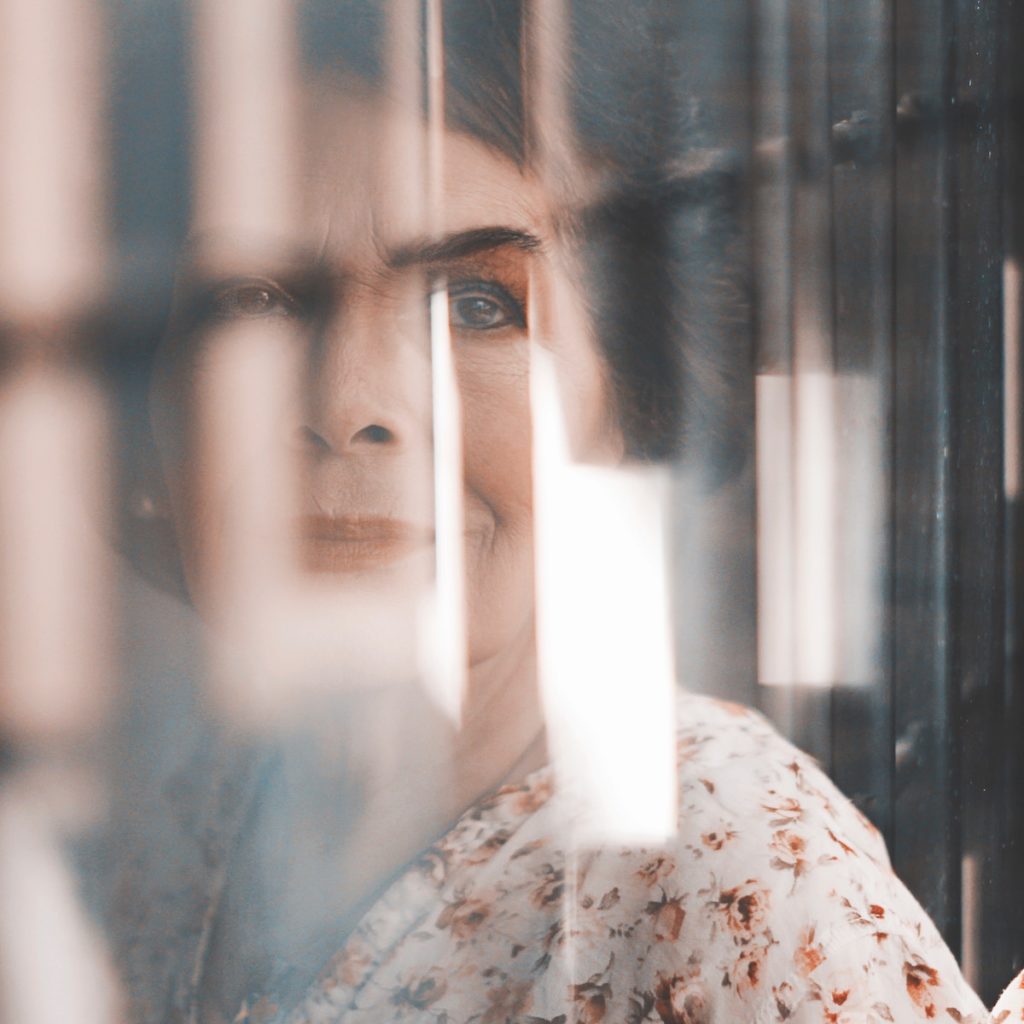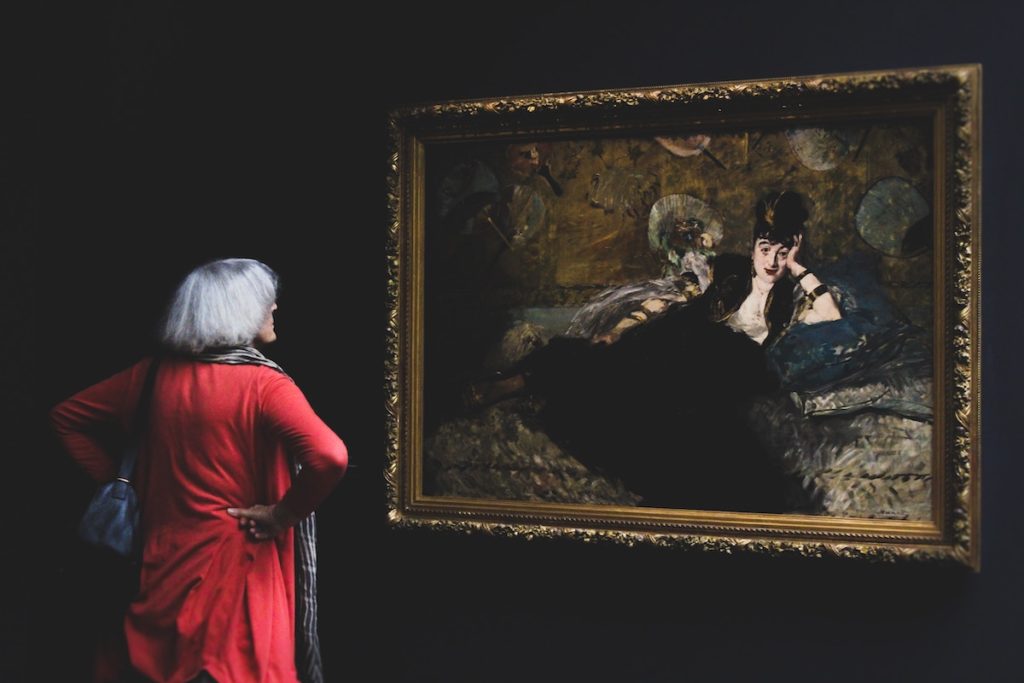
Museums are just dusty old places. Or are they? Perhaps they can also be good for our health and our wellbeing.
A new field of practice and research, ‘Museum in Health’, is looking at this question. Echoing the movement of Arts in Health, its aim is to examine the health and wellbeing impacts of taking part in museum and art gallery activities, such as supported visits, object handling and collections-based creative activities (Chatterjee and Noble, 2013).
The recent review report by the All Party Parliamentary Group for Arts in Health (2017) suggests that museums can play a role in public health interventions (see also Camic and Chatterjee, 2013). One aspect of this potential role is through social prescribing, which is a process through which GPs or primary care workers refer people to a range of local, non-clinical services – in this case, a museum. Here on the Mental Elf blog, Mike Clark has written about social prescribing for dementia, and Jane Greenstock also has a blog on this approach: community singing for successful ageing.
The study I am reviewing here examines the impact of a social prescription project for socially isolated older adults (Thomson et al, 2018). As the authors note: “museums are relative newcomers to social prescribing with pilot events taking place from 2008 onwards, compared with arts and exercise on prescription available since the early 1990s”. However, they suggest that they can play a role within community-based healthcare provision as well-established assets within communities.
We know from research that loneliness and social isolation are a key contributor to poor physical health and low wellbeing in older adults – this is a central message of the Campaign to End Loneliness, and see also an interesting older blog by André Tomlin on the AMSTEL study.
A recent study reports on the impact for participants of a 10-week ‘museums on prescription’ programme designed for social isolated adults and delivered by seven partner museums in Kent and London (Thomson et al, 2018). The activities took place weekly as two-hour group sessions at the museum and included curator talks, behind-the-scenes tours, object handling and discussion, and arts activities inspired by the museum collections. Here I take a look at the study and what it tells us about museums, and how they might contribute to wellbeing.

Should GPs be prescribing museums to socially isolated older people?
Methods
The study uses a mixed-method framework to examine the effects of a social prescribing programme delivered by museums for older adults “at risk of loneliness or social isolation”, aged 65-96. The selection criteria for the study was “socially isolated [adults], able to give informed consent, not in employment, not regularly attending social or cultural activities” and participants were referred to the programme by healthcare or third sector organisations. Though the sessions were different in term of museum locations and collections, a standard approach to programme delivery was taken in terms of length and activity types.
Quantitative measures of psychological wellbeing (Museum Wellbeing Measure for Older Adults) were taken pre- and post-sessions at three points during the programme: at the beginning, mid-point and end. Quantitative data were collected for a total of 115 participants across 12 museum programmes, with each programme running over a 10- week period (the average number of participants per programme is not stated in the paper but we might assume small groups of 8-10 per programme). The study comprised 63% women and 82% of participants identified as White British.
The Museum Wellbeing Measure for Older Adults (MWM-OA) was developed by the same University College London research team as the first measure to specifically assess the impact of taking part in museum activities in terms of psychological well-being. It uses the principles of PANAS (Positive Affect Negative Affect Scale) to examine impact within sessions (pre-and post-study) and across museum sessions over time. The MWM-OA looks only at positive affect across 6 emotions (absorbed, active, cheerful, enlightened, encouraged and inspired) with each emotion rated out of five by participants.
The study also used qualitative methods including end of programme interviews with participants, carers (when present) and museum staff; alongside participant diaries and researcher diaries with set guiding questions that were completed after every weekly session.
Results
The analysis of the quantitative data shows statistically significantly improvements in mean post-session scores from the three time-points from across all programmes. This leads the authors to conclude that the programmes contributed positively to group wellbeing overall, both within a session and over time (10 weeks).
The authors then break this down further to look at which emotions showed the highest level of improvement across sessions through a series of multivariate analysis of variance (MANOVA). Not all emotions increased equally across the programme: ‘enlightened’ and ‘absorbed’ were rated disproportionately higher than the other emotions when pre- and post-session scores were compared, a difference was most prominent at the start of the programme (beginning to mid-point).
Within their analysis the authors consider clinically meaningful change drawing on evidence from quality of life measures (since the MWM-OA is a new custom measure). Here they suggest that effect sizes in their study were small (>0.20) for both pooled emotion items (>0.60), and pre-post session improvement for each item (>0.40).
The qualitative results enable the authors to draw out the individual impact of the session on participants. They report that participants experienced a sense of privilege from the opportunity to engage with curators, visit behind the scenes parts of the museum and handle objects usually kept behind glass. Participants also spoke about acquiring learning and new skills, and highlighted the positive experience of getting to know new people in a different context.

Participants in the study experienced a sense of privilege, valued the opportunity to liaise with curators, visit parts of the museum closed to the public and handle objects normally behind glass.
Conclusion
The authors conclude that:
Museums can be instrumental in offering older adult activities that improve psychological wellbeing.
The authors suggest that this programme could be scaled up nationally. There is certainly some promising evidence in this study about the potential of this approach.
Strengths and limitations
One particular strength of this paper is its use of mixed-methods to gain a deeper understanding of the impact of the programme and including participant perspectives. This aspect of the study is not as developed in the reviewed paper, but it does give us a glimpse into participants experiences. Further analysis of interviews and diaries could help us to better understand how these programmes might combat loneliness and experiences of social isolation.
In terms of the quantitative analysis, the authors present a series of statistical t-tests to demonstrate the significance of their results and their effect size to suggest clinical significance. Insufficient detail is given to properly interpret the effect size scores.
The authors comment on the lack of economic impact analysis of museums on prescription schemes as one challenge for implementation, and in order to scale up these programmes nationally. They draw out a convincing case however about the potential of museums in terms of their setting, collections and skilled staff.
The authors suggest that museums on prescription can address social and cultural inequities. Here I feel the claims could be more measured. Museum audiences are not representative of the broader population, indeed museums are still experienced by many as exclusive, elitist spaces for socio-economically advantaged groups. Some people might feel unwelcome (I am thinking here of Pierre Bourdieu’s work on cultural capital in the 1960s, which is just as relevant today) or they might simply think museums are not relevant to their lives, and do not see themselves represented in the museums’ stories or collections; this is particularly the case for minority and BAME groups. There is further work needed to understand how diverse and disadvantaged groups will engage with social prescribing schemes in museums and art galleries, and the different barriers to accessing these services.

There is further work needed to understand how diverse and disadvantaged groups will engage with social prescribing schemes in museums and art galleries, and the different barriers to accessing these services.
Implications for practice
There is a growing movement of museums and art galleries that are looking to develop wellbeing programmes for a range of visitors and non-visitors, in particular older adults (see National Alliance for Museums, Health and Wellbeing 2016 Report (PDF)). But these have tended to be small-scale projects or one-off events outside of formal healthcare provision pathways. The key message in this paper is that museums can play an important role in community healthcare provision through a social prescription model, but because museums are a recent newcomer to this kind of approach, further research is of course needed.
To me, it’s great to see a new paper that addresses museums projects in the context of a recognised approach to delivery. Museums in the UK have been involved in working with vulnerable or otherwise marginalised groups for many years. We could go back to the Victorians here; and work around social inclusion (minus some of the patronising elements of its forebears), which is central to contemporary museum practice. The idea of museums on prescription is an exciting one, and I look forward to seeing more work and research in this area.
#LetsTalkMentalHealthII videos
#LetsTalkMentalHealthII is a series of videos created by the ESRC Mental Health Leadership Fellow (Prof Louise Arseneault) and her team, which aims to:
- Look ahead to the future for young people in mental health
- Highlight young people’s voice in mental health
- Promote the work of emerging disciplines in mental health
- Emphasise the perspectives of people with lived experience of mental health difficulties.
Join the #LetsTalkMentalHealthII conversation on Twitter or watch the videos on the Mental Health Leadership YouTube channel.
Conflicts of interest
While I was not involved in this study, I have worked as a Research Associate on the ‘Not So Grim Up North: investigating the health and wellbeing impact of museum-based activities’ which was led by the UCL research team of Professor Helen Chatterjee and Dr Linda Thomson.
Links
Primary paper
Thomson LJ, Lockyer B, Camic PM, Chatterjee HJ. (2018) Effects of a museum-based social prescription intervention on quantitative measures of psychological wellbeing in older adults. Perspectives in Public Health, 138(1), pp. 28–38. doi: 10.1177/1757913917737563.
Other references
All-Party Parliamentary Group on Arts, Health and Wellbeing (2017) Creative Health: The Arts for Health and Wellbeing. Available at: http://www.artshealthandwellbeing.org.uk/appg-inquiry/ (Accessed: 31 July 2017).
Camic, P.M. and Chatterjee, H.J. (2013) ‘Museums and art galleries as partners for public health interventions’, Perspectives in public health, 133(1), pp. 66–71.
Chatterjee, H. and Noble, G. (2013) Museums, Health and Well-Being. Farnham: Ashgate.
Veall, D. et al (2017) Museums on Prescription: A guide to working with older people. Available at: https://culturehealthresearch.files.wordpress.com/2017/10/mopguide.pdf
Photo credits
- Photo by Samuel Zeller on Unsplash
- Photo by Luke Ellis-Craven on Unsplash
- Photo by Luis Machado on Unsplash
- Photo by Bianca Isofache on Unsplash
